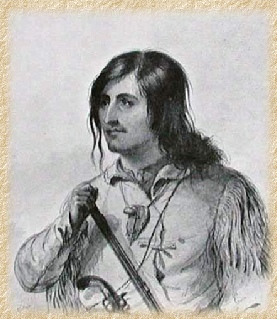Subject Guide

Mountain West
Malachite’s Big Hole

So why was it that the Mountain Men went to the trouble and effort of regularly scraping the hair off of their face? It certainly would have been much easier just to let nature take its course. There were three main reasons for shaving: hygiene, fashion and trade.
Hygiene: Mountain Men were not noted for their cleanliness, often not bathing for months, or longer, at a time. Head lice were a major problem in those times, both in civilized parts as well as in the wilderness. Beards only encouraged the nasty little critters to expand their habitat to include the face. Besides being most unpleasant, this could be extremely distasteful, especially when eating.
Fashion: Beards and any other type of facial hair simply weren't in fashion, either in the United States or Europe until the middle 1850’s, and wasn’t widespread until the 1860’s. Kurz’ drawings, based on his experience on the Upper Missouri River from 1846 to 1851 show most “whites” from the bourgeois to the lowest engagé, as clean shaven. Of that minority shown with facial hair, only two men are shown with an unkempt, bushy beards, and one of those was a traveler on his way to California.
Business and Social: Except at rendezvous, most commercial contact mountain men had was with the Indians. Indians were not only a source of furs and skins, but also provided food, shelter, horses, clothing, and wives. Indian males had only sparse or no facial hair. Any stray hairs which appeared would be carefully plucked. The Indians considered any man with a full beard to be a barbarian, applying to such individuals the insulting description “Dog Face.” When trade with the Indians was necessary or desirable for Mountain Men, it was always advantageous to start with the respect of the potential trade partner rather then with their condescension. Furthermore, winning the favors of an Indian maiden would have been far more difficult if the woman was thinking “Dog Face.”
Maintaining a clean-shaven aspect would not have been difficult. Straight razors were known from trade inventories of the time, and it’s highly improbable these items were intended for trade with the Indians. Straight razors are effective at removing stubble of less than a few days growth, however, it becomes increasingly difficult to use as the beard gets longer. It’s likely that shaving didn’t take place daily, but was regularly performed before the beard got too difficult to manage. The photo below shows a straight razor circa 1820-1850.
